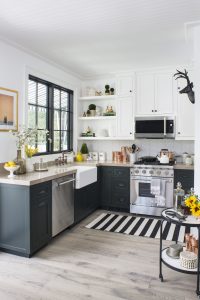Do you want to tighten the security of your home or business? Have you recently encountered a security attack, and you want to address this problem? Have you considered automating your home? Do you want to install, replace or upgrade your alarm system? How can a DIY alarm installation system save you money?
Home automation security system
Home automation devices include smart cameras, smart locks, smart thermostats, smart lights, smart doorbells, and smart smoke alarms. These automated devices are all accessible and controllable through one app or control panel.

A security system needs to have the following features:
- A hub with internet access that forms a network with all the components of the security system. This allows you to access your system from anywhere.
- Window and door sensors detect when the window or door is opened.
- Motions sensors detect any kind of movement within a room.
- Smartphone app to monitor your home for any threat.
- A camera that is internet-connected to get live videos of your home.
- High decibel alarm that will scare off thieves and alert the neighbors to come to your rescue.
DIY alarm installation
A smart home creates an awesome experience that allows you to control your home security when you are far from home. They make home control easier since they are convenient, secure, and efficient for your home. Being an amateur in alarm installation could take you longer to install, but it will significantly save you money.
You have to be physically present when an alarm goes off to seek an emergency response. Luckily, with home security automation, you can monitor and connect the alarm system on your smartphone. This alerts you every time the alarm is triggered.
Components of DIY alarm system
1. Control panel with a keypad
The keypad is used to activate or deactivate the system. With an advanced panel, you can access programs like alarm setting. In case the sensors detect a threat, the control panel sets off the alarm and notifies the appropriate emergency responders.
2. Sensors
Every alarm system has sensors that are placed on the window and doors. The number of sensors you need depends on the user’s preference, number of windows and doors you have.

4. Motion detectors
They are placed at the corners, and they react when they detect movement in the room. Some of the advanced detectors are paired with security cameras, and they record video when they see motion.
Steps of the DIY alarm installation
Most alarm system companies pre-program the alarm system before shipping it to you. After its arrival, you follow simple instructions for plugging in the control panel and placing sensors. The transmitters are mounted on the doors and windows then the control panel is connected to a power supply and phone lines. The following process is followed for a DIY alarm installation:
- Install the control panel.
The control panel should be placed in an accessible location in your home. It should be close to a power source and near the main entry door. You can mount the panel onto the wall using a hammer and nail or removable double-sided adhesive.
- Place the detectors and sensors all over your home
The alarm sensors come with a double-sided adhesive, or you can use screws to mount them
- Test the alarm system
You call the alarm system company to activate your system. The company will:
- go through each sensor with you to ensure they work well
- remotely test the control panel
The system is then activated.

Ways in which a DIY alarm installation system saves you money
- Installing the system by yourself saves you the money you would have paid for installation by an alarm company.
- It is affordable to purchase compared to a professional alarm system. You can get a DIY alarm system at half the price of the professional system.
- Monitoring service that gets to notify police or fire departments is optional and costs less in a DIY alarm system. A professional system asks for a lot of money for monitoring services every month, in a contract.
- It is easy to install and uninstall a DIY alarm system. When you move to a new house, you can move with this alarm system. This saves you the expense of buying another one or asking a professional company to do the installation.
- An alarm goes off if it senses any kind of intrusion or threat. This ensures that your valuable property is always kept safe at all times.
Reasons for purchasing a DIY alarm system
- Previous experience is not required.
- No extra tools are required.
- It is easy and takes less time to install.
- It saves you the money you could have used on activation cost or upfront installation. They are affordable compared to professionally installed alarms.
- They are the best alarm system as they are wireless. They use wireless sensors meaning you do not need to conduct wiring to install. It is not possible for a thief to cut-off the connection to sabotage the alarm system.
- The traditional alarm system was notorious for triggering a false alarm hence greatly unreliable.
- You can move with it to a new house.

It is easy to uninstall this alarm system
- Notify the alarm company that you will be moving
- The system is first disarmed
- The main control panel is unplugged, and the wireless alarm sensors are removed.
When you get to the new home, installation is done.
Conclusion
Home security automation is becoming extremely popular among homeowners. Smart security equipment is controlled and accessed by an app, voice, or control panel and is used to automate your home. Do it yourself alarm systems are relatively easy to install, reliable, and affordable.
When you install the alarm system by yourself, you get to choose the best components for your family’s needs. Doing this saves you money since you buy only the components of the system you need. You should take your time to learn and understand how to install and operate the alarm system. Thanks to innovatesfl.com for consulting.
























